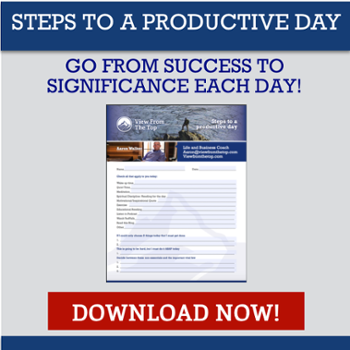When it comes to investing and the markets, we often use terms such as strategy, tactics, and game plan. Why is that? Because the markets have many similarities to a game of chess. While we can guess at general market movements, the reality of these ups and downs can unfold in thousands of ways, just as a chess game can have drastic turns that don’t follow a particular pattern.

Does that mean we just buckle up, grit our teeth, and hope for the best? Here’s a look at our current market environment and some steps you can take to prepare yourself.
A Look At Volatility
As much as technology has advanced with sophisticated software that can now analyze historical data, calculate outcomes, and estimate future trends, the markets are still unpredictable. All it takes is one new piece of information or the effects of a natural disaster to cause the markets to rise or fall.
For example, a large corporation may report higher-than-expected earnings, which leads to a market uptick. Then the government reports that job growth is lower than expected, and the markets fall. When this pattern happens over and over, we call it market volatility, and that’s exactly what we are witnessing right now.
In October, the volatility index hit its highest level since February, which was the most volatile month we’ve seen since 1996. And at the end of October, the stock market fell drastically, wiping out all of 2018’s gains to date. After last year’s historically low volatility, its resurgence in 2018 has been hard for investors to stomach. In fact, a recent Allianz Life study found that 37% of investors are anxious about the recent volatility.
One way to get through this volatility without losing sleep is to avoid the element of surprise. When you are caught unawares, you’re more likely to make emotional decisions and panic, which can hurt your portfolio. Let’s look at some potential factors that could affect the markets and what you can do to avoid surprises.
Political Gridlock
While past performance is no guarantee of future results, history tells us that the S&P 500 usually climbs an average of 31% in the year after a midterm election. That’s because, after an election, uncertainty fades as we gain a better idea of who’s in power and what their agenda will be.
In this year’s midterms, Democrats took control of the House and Republicans retained the Senate. When this happens, we usually see something called congressional gridlock. When two parties that are diametrically opposed to each other share power, they rarely agree on much, so not much changes. This type of gridlock can be frustrating, but the markets often prefer it, which could lead to the markets going up.
Scandal And Uncertainty
The markets hate uncertainty, so even though the markets usually go up after midterms, there may be too much uncertainty this time around due to the ongoing investigations surrounding President Trump’s campaign and other alleged scandals. The House of Representatives, now controlled by the Democrats, holds much of Congress’s investigative power, and you can bet they won’t let these issues go.
Then, too, despite the perception that gridlock is good for the markets, historical data doesn’t always support that. In fact, the past five instances of the Republicans controlling the White House and Senate and the Democrats running the House, the Dow Jones reported an average annual loss of 1.69%.
Holidays And Profits
The markets may also benefit from the holiday season. Black Friday, Cyber Monday, and all the shopping days that follow transform this time of year into a winter wonderland for retailers. To put it simply, more sales mean more profits, and more profits mean happier investors.
The problem is, we can’t pinpoint exactly how much people will buy. Analysts are predicting that Americans will spend more than $1 trillion this holiday season, the highest ever. But as with all predictions, it could go the other way. People are sometimes stingier with their wallets than expected.
Interest Rates, Trade Wars, Corporate Earnings Doubts
How these three factors play out could heavily influence which way the markets go in the near future. As the economy has improved, the Federal Reserve has slowly raised interest rates to protect against inflation and plan to implement one more increase before the year ends. Higher rates make borrowing money more costly for businesses, which can lead to spending cutbacks. These cuts then lead to less investment, less expansion, and less growth. As the spiral continues, investors tend not to invest in companies that don’t seem like they are growing.
And that’s just interest rates. Many investors are also concerned about corporate earnings. Earnings have been strong in 2018 for the most part, but that just means the bar is higher in 2019. If corporations struggle to reach or exceed that bar, it may look like they are struggling, which then impacts the markets.
And finally, there’s the trade war. To date, the U.S. has imposed tariffs on over 10,000 Chinese products. China, of course, has retaliated with tariffs of their own. So far, the trade war hasn’t devastated the markets, but it does increase that uncertainty the markets don’t like.
Prepare Yourself
Contrary to popular thought, market volatility is not the same as a bear market. Despite all the losses and the current market roller coaster ride, that does not necessarily mean we are headed for dark times. There are plenty of factors that could affect the markets going forward, and not all of these factors will have a negative effect. When you put everything together, it’s likely the outcome won’t be a rising or falling market, just a volatile market.
Here are three things you can do to prepare yourself and your investments for increased volatility:
- First, remember to keep a long-term perspective. Stock market investing is for the long term, so you shouldn’t let short-term volatility scare you.
- Second, tune out the noise. Avoid falling prey to the media, which tends to exaggerate. Instead, stick to the information you’ve gleaned from your financial professional and what you know about your personal risk tolerance and goals.
- Finally, trust your portfolio. Your portfolio is made up of not just stocks but also bonds and other assets as well. They are designed to work together and balance each other out so that you won’t experience the wild ride that other investors experience. We custom-design every portfolio with your specific time horizon and investment goals in mind, and you can trust that it will achieve its goals regardless of what the markets do today or tomorrow.
Talk To Your Advisor
The only long-term guarantee in investing is that there will be short-term fluctuations. We’ll experience bull markets, bear markets, and volatility in the decades ahead just as we have in the past. Rather than fear change, focus on preparing for it. If you have questions about your portfolio or investment goals, we at Wallace Hart Capital Management would be happy to meet with you and discuss how we can help. To get started, contact us at 859.300.3030 or request an appointment online today!
About Jeremy
Jeremy Wallace is a member of Iron Sharpens Iron Mastermind Group. He is the founder and chief investment officer at Wallace Hart Capital Management, an independent financial services firm committed to offering comprehensive advice and customized services. Jeremy has 20 years of experience in the financial industry and is passionate about helping clients preserve and enhance their wealth so they can pursue their passions. Jeremy graduated from Emory University with a degree in international economics and a certificate in financial planning. Outside of the office, Jeremy spends most of his free time with his wife, Julie, and their three children, Isabel, Lincoln, and Reid. He is an avid Chicago Cubs baseball fan, and he enjoys golfing with his wife and traveling with his family. Learn more about Jeremy by connecting with him on LinkedIn.





